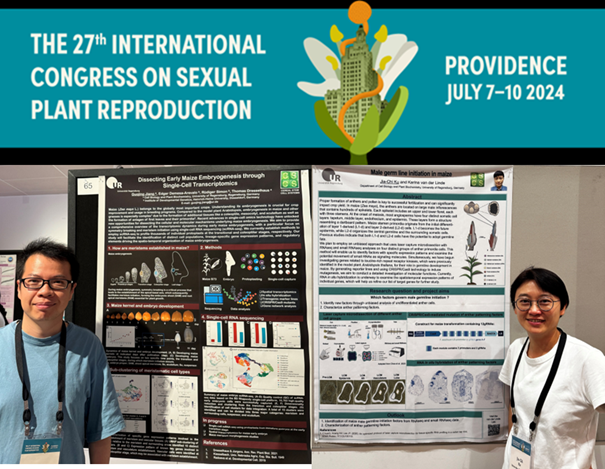Welcome
 Plant meristems are major determinants of plant architecture, plant diversification and acclimation to environmental stresses. Moreover, meristems are fundamentally important for the productivity of crop plants as they directly determine yield.
Plant meristems are major determinants of plant architecture, plant diversification and acclimation to environmental stresses. Moreover, meristems are fundamentally important for the productivity of crop plants as they directly determine yield.
Work in the model plant Arabidopsis revealed that meristems are organized by stem cell niches consisting of rarely dividing organizing cells, which are surrounded by stem cells. Stem cell niches in this species are regulated by feedback loops of stem cell controlling transcription factors and secreted ligands that are perceived by receptor kinases.
Compared to Arabidopsis, the shoot and root architectures of grasses (cereals) including the economically important crops maize, wheat, rice and barley are more complex. Grasses generate large vegetative meristems, produce additional organs like seminal and crown roots as well as highly complex inflorescence meristems with meristem types absent in eudicots. Mutations in genes controlling grass meristem functions have played key roles during crop domestication. Despite their economic importance, our understanding of meristem development and the organization of cereal stem cell systems is very limited. Studies reported so far indicated that paradigms based on studies using Arabidopsis are not universally applicable.
The goal of the research unit FOR5235 is to explore whether the complex meristems of cereals are sculpted by conserved but strongly modified, or also by novel signaling pathways and associated gene regulatory networks. The focus lies on maize as an example for a tropical cereal crop (Panicoideae), barley as an example for a temperate cereal crop (Pooideae) and its close relative, the model grass Brachypodium,

Meristems generate vegetative and reproductive plant organs and their activity is regulated and organized by stem cell niches.
Events
2025
INTERNATIONAL SYMPOSIUM ON CEREAL MERISTEMS AND STEM CELL SYSTEMS
News

25.03.2025
Lea Berg's image has been shortlisted for the Node-FocalPlane image competition.

24.03.2025
On-site filming of the CSCS video took place in Regensburg!

13.03.2025
CSCS at the 67th annual maize genetics meeting in St. Louis, USA

13.03.2025
Our PI Prof. Dr. Frank Hochholdinger from University of Bonn received the 2025 maize genetics cooperator award!

13.02.2025
CSCS at the 38th Molecular Biology of Plants Conference of the Deutsche Botanische Gesellschaft (DBG) in Hennef, Germany

29.01.2025
Congratulations to Karina van der Linde on her successful habilitation!

21.01.2025
3rd CSCS Annual Retreat in Bern, Switzerland

09.10.2024
CSCS at Perspectives on Protein Networks in Plants in Strasbourg, France.

02.10.2024
CSCS at 6th European Maize Meeting in Antwerp, Belgium.

18.07.2024


